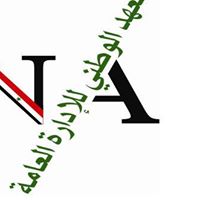اشترك بالحزمة الذهبية واحصل على وصول غير محدود شمرا أكاديميا
تسجيل مستخدم جديدHadronic interaction model Sibyll 2.3d and extensive air showers
75
0
0.0
(
0
)
اسأل ChatGPT حول البحث

ﻻ يوجد ملخص باللغة العربية
We present a new version of the hadron interaction event generator Sibyll. While the core ideas of the model have been preserved, the new version handles the production of baryon pairs and leading particles in a new way. In addition, production of charmed hadrons is included. Updates to the model are informed by high-precision measurements of the total and inelastic cross sections with the forward detectors at the LHC that constrain the extrapolation to ultra-high energy. Minimum-bias measurements of particle spectra and multiplicities support the tuning of fragmentation parameters. This paper demonstrates the impact of these changes on air shower observables such as $X_{rm max}$ and $N_mu$, drawing comparisons with other contemporary cosmic ray interaction models.
قيم البحث
اقرأ أيضاً
In order to examine a muon excess observed by the Pierre Auger Observatory, detailed Monte Carlo simulations were carried out for primary protons, iron nuclei and strangelets (hypothetical stable lumps of strange quark matter). We obtained a rough ag
reement between the simulations and the data for ordinary nuclei without any contribution of strangelets in primary flux of cosmic rays. Our simulations suggest that the shower observables are dominated by details of hadronic interaction models.
Ultra-high energy cosmic rays (UHECRs) interacting with the atmosphere generate extensive air showers (EAS) of secondary particles. The depth corresponding to the maximum development of the shower, $Xmax$, is a well-known observable for determining t
he nature of the primary cosmic ray which initiated the cascade process. In this paper, we present an empirical model to describe the distribution of $Xmax$ for EAS initiated by nuclei, in the energy range from $10^{17}$ eV up to $10^{21}$ eV, and by photons, in the energy range from $10^{17}$ eV up to $10^{19.6}$ eV. Our model adopts the generalized Gumbel distribution motivated by the relationship between the generalized Gumbel statistics and the distribution of the sum of non-identically distributed variables in dissipative stochastic systems. We provide an analytical expression for describing the $Xmax$ distribution for photons and for nuclei, and for their first two statistical moments, namely $langle Xmaxrangle$ and $sigma^{2}(Xmax)$. The impact of the hadronic interaction model is investigated in detail, even in the case of the most up-to-date models accounting for LHC observations. We also briefly discuss the differences with a more classical approach and an application to the experimental data based on information theory.
The understanding of the basic properties of the ultra - high energy extensive air showers is strongly dependent on the description of the hadronic interactions in a energy range beyond that probed by the LHC. One of the uncertainties present in the
modeling of the air showers is the treatment of diffractive interactions, which are dominated by non - perturbative physics and usually described by phenomenological models. These interactions are expect to affect the development of the air showers, since they provide a way of transporting substantial amounts of energy deep in the atmosphere, modifying the global characteristics of the shower profile. In this paper we investigate the impact of the diffractive interactions in the observables that can be measured in hadronic collisions at high energies and ultra - high energy cosmic ray interactions. We consider three distinct phenomenological models for the treatment of diffractive physics and estimate the influence of these interactions on the elasticity, number of secondaries, longitudinal air shower profiles and muon densities for proton - air and iron - air collisions at different primary energies. Our results demonstrate that the diffractive events has a non - negligible effect on the observables and that the distinct approaches for these interactions, present in the phenomenological models, are an important source of theoretical uncertainty for the description of the extensive air showers.
Future detection of Extensive Air Showers (EAS) produced by Ultra High Energy Cosmic Particles (UHECP) by means of space based fluorescence telescopes will open a new window on the universe and allow cosmic ray and neutrino astronomy at a level that
is virtually impossible for ground based detectors. In this paper we summarize the results obtained in the context of the EUSO project by means of a detailed Monte Carlo simulation of all the physical processes involved in the fluorescence technique, from the Extensive Air Shower development to the instrument response. Particular emphasis is given to modeling the light propagation in the atmosphere and the effect of clouds. Main results on energy threshold and resolution, direction resolution and Xmax determination are reported. Results are based on EUSO telescope design, but are also extended to larger and more sensitive detectors.
As of 2023, the Square Kilometre Array will constitute the worlds largest radio telescope, offering unprecedented capabilities for a diverse science programme in radio astronomy. At the same time, the SKA will be ideally suited to detect extensive ai
r showers initiated by cosmic rays in the Earths atmosphere via their radio emission. With its very dense and uniform antenna spacing in a fiducial area of one km$^2$ and its large bandwidth of 50-350 MHz, the low-frequency part of the SKA will provide very precise measurements of individual cosmic ray air showers. These precision measurements will allow detailed studies of the mass composition of cosmic rays in the energy region of transition from a Galactic to an extragalactic origin. Also, the SKA will facilitate three-dimensional tomography of the electromagnetic cascades of air showers, allowing the study of particle interactions at energies beyond the reach of the LHC. Finally, studies of possible connections between air showers and lightning initiation can be taken to a new level with the SKA. We discuss the science potential of air shower detection with the SKA and report on the technical requirements and project status.
سجل دخول لتتمكن من نشر تعليقات
التعليقات
جاري جلب التعليقات


سجل دخول لتتمكن من متابعة معايير البحث التي قمت باختيارها


